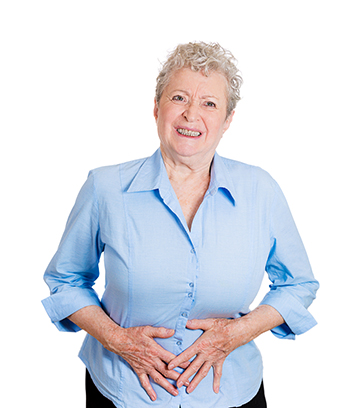A Brief History Of Nonsurgical Treatments For Stress Urinary Incontinence
 Stress urinary incontinence (SUI), which usually is related to pelvic organ prolapse (POP), is the involuntary leakage of urine with activity or straining such as when a woman is exercising, coughing, or even stepping off a curb. Estimates of 25% to 60% of women experience this over the course of their lifetime, and the numbers increase with increasing age.
Stress urinary incontinence (SUI), which usually is related to pelvic organ prolapse (POP), is the involuntary leakage of urine with activity or straining such as when a woman is exercising, coughing, or even stepping off a curb. Estimates of 25% to 60% of women experience this over the course of their lifetime, and the numbers increase with increasing age.
A woman’s ability to control urinary leakage with exertion requires contraction of the muscles of the external urethral sphincter and physical compression of the proximal urethra which lies within the anterior wall of the vagina. Numerous therapies and nonsurgical procedures have been developed over the years to help correct this problem, including pelvic exercises, pessaries, hormonal treatments, and biofeedback. No single therapy is considered best. The success of any one of these is difficult to measure because of small study numbers and the type and duration of observation. Many times, a combination produces the best outcome.
Physiologic therapy of the pelvic musculature, first championed by Arnold Kegel in the mid-1950s, focused on strengthening the pubococcygeus muscle of the pelvis. This muscle connecting the symphysis pubis to the coccyx sends numerous fibers that insert into the intrinsic musculature of the proximal urethra, middle third of the vagina, and rectum. Today, Kegel exercises are widely used as a first-line treatment promoted by Kegel’s early writings describing “complete relief from simple urinary stress incontinence… in a series of over 700 users.” A more recent study from the Norwegian Centre for Physiotherapy Research confirmed that patients who performed Kegel exercises significantly improved stress urinary incontinence as compared with those who did not.
Pessaries are synthetic devices which provide artificial mechanical support to the vagina and cervix. They have been used for both POP and SUI. While often promoted as a first-line approach for both, pessary success is often difficult to document because of the many different types of pessaries that can be used and the varying degrees of POP that occur with SUI. Nonetheless, success rates up to 62% for advanced POP have been reported, although less success is achieved if POP is associated with SUI.
Hormone therapy would seem to address menopausal changes in tissues of the vaginal mucosa and lower bladder when ovarian estradiol ceases to be produced. Systemic hormone replacement, however, has failed to correct this problem as demonstrated conclusively in a recent Cochrane review. This conclusion is consistent with other studies in which over 50% of women on systemic hormone replacement, while relieved of generalized menopausal symptoms, continue to experience vaginal atrophy and painful intercourse. Localized vaginal estrogen treatment, in contrast, appears to improve POP and SUI.
Biofeedback, using EMG (electromyography) or surface EMG, is an effective nonsurgical option for moderate SUI with success rates as high as 60%. Combined use of voiding diaries, timed voids, and selective restriction of fluids link behavioral training to physical function. More extensive biofeedback may include the placement of vaginal tension-measuring devices or small electrical sensors on the perineum or in the vagina. These devices are then connected to a computer to display pelvic muscle activity during voluntary pelvic muscle strengthening exercises. Pelvic floor
rehabilitation involves strengthening weak pelvic floor muscles (cause of SUI and POP) and controlling spasms in these same muscles (cause of pelvic/perineal pain). Often, a specially trained physical therapist can help guide a patient and develop an effective plan.
The nonsurgical management of stress urinary incontinence is a constantly evolving field involving both old and new innovative treatments. In reality, the use of several of these therapies together often can lead to significant improvement in SUI. Even preoperative pelvic muscle strengthening and re-education with simple behavior modification can improve the results of surgical treatments of SUI, but many times, the nonsurgical treatments alone for some patients can produce enough improvement that surgery is no longer desired.
By James Woods, M.D. and Elizabeth Warner, M.D.
Dr. Woods treats patients for menopause at the Hess/Woods Gynecology Practice.
Disclaimer: The information included on this site is for general educational purposes only. It is not intended nor implied to be a substitute for or form of patient specific medical advice and cannot be used for clinical management of specific patients. Our responses to questions submitted are based solely on information provided by the submitting institution. No information has been obtained from any actual patient, and no physician-patient relationship is intended or implied by our response. This site is for general information purposes only. Practitioners seeking guidance regarding the management of any actual patient should consult with another practitioner willing and able to provide patient specific advice. Our response should also not be relied upon for legal defense, and does not imply any agreement on our part to act in a legal defense capacity.
James Woods |
6/1/2016
You may also like